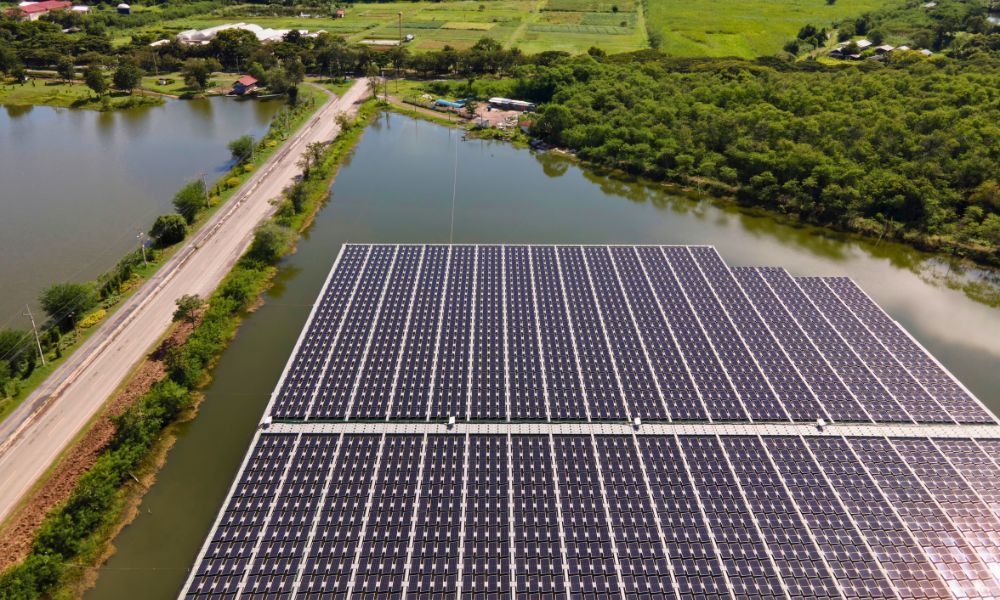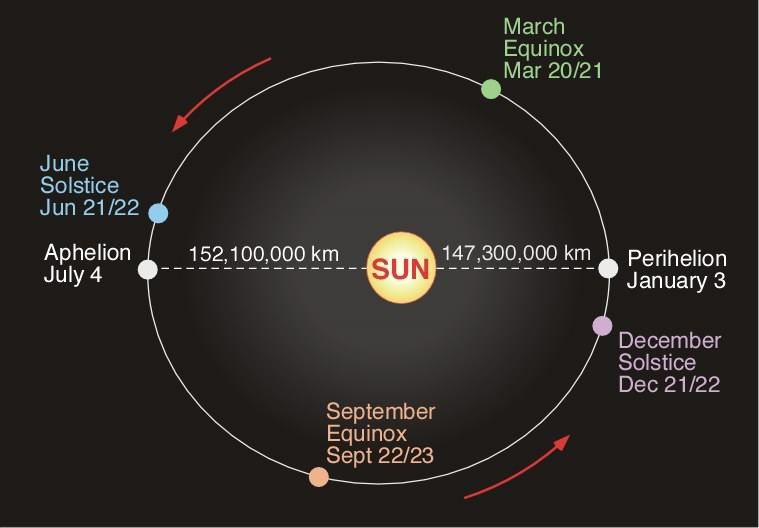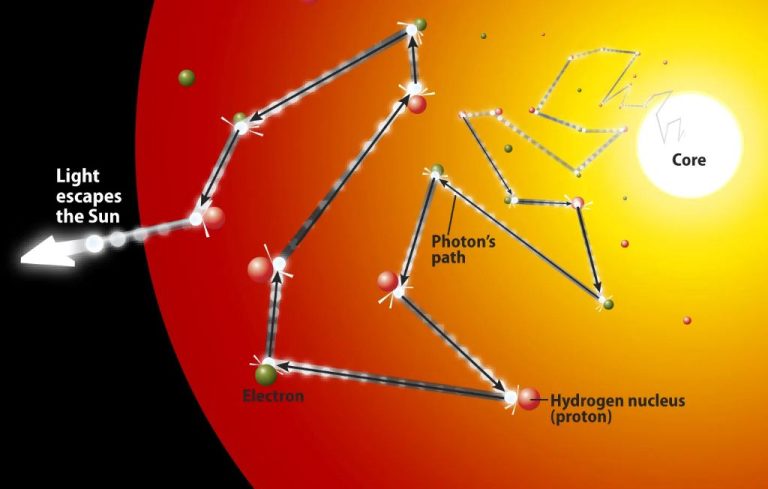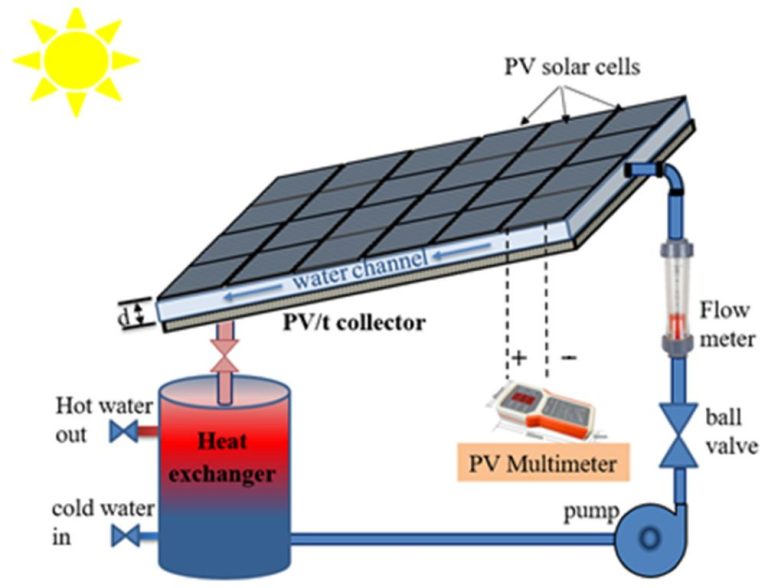Is There An Infinite Amount Of Solar Energy?

Solar energy is the radiant light and heat that comes from the sun. It is harnessed using a range of technologies such as solar heating, solar photovoltaics, solar thermal energy, solar architecture and artificial photosynthesis (Solar Energy Basics | solarenergyfactsblog.com). Solar energy is a renewable energy source and has many advantages. It is abundant, inexhaustible, clean and reduces our dependence on fossil fuels. With global energy consumption steadily rising, many wonder whether solar power can realistically meet the world’s growing energy needs. This brings up an important question – is there an infinite amount of solar energy?
The Sun’s Lifespan
The Sun is estimated to be able to continue producing energy for another 5 billion years based on models of stellar evolution and our knowledge of the lifecycle of stars like our Sun (Quora, 2015). While the Sun formed about 4.6 billion years ago, it is currently in the most stable part of its life cycle and will remain so for billions of years to come.
According to models, in about 5 billion years the Sun will begin to exhaust its supply of hydrogen fuel and start to expand and cool, becoming a red giant star. This will mark the end of the Sun’s current stable phase during which life has been able to evolve on Earth (YouTube, 2023). So we have at least 5 billion years during which the Sun can continue providing solar energy at its current levels before major changes happen.
Overall, the expected lifespan of the Sun is approximately 10 billion years total. So we are currently at the halfway point, with 5 billion years remaining of stable energy output. From a human perspective, this means the Sun can be viewed as an essentially endless source of solar power for all intents and purposes when planning our energy future over the next centuries and millennia. While solar panels may wear out over decades, the Sun itself will keep shining.
Limits of Solar Technology
While solar energy has enormous potential, there are some limitations around solar technology efficiency, energy storage, and land availability that constrain widespread adoption. Current solar panels on average convert 15-20% of sunlight into electricity, although lab prototypes have reached over 40% efficiency (Challenges of Solar Energy Storage). Solar efficiency depends on factors like panel materials, tracking systems, and concentrating optics which focus sunlight onto smaller solar cells. However, commercial production of highly efficient solar panels remains economically prohibitive.
Storing solar energy presents additional hurdles, as batteries are still relatively expensive for grid-scale systems. Solar power can be inconsistent depending on weather and time of day, so storage is necessary to provide continuous electricity supply. But scaling battery systems like lithium-ion to nationwide capacity would require major investments and innovations in storage technology. There are also limits around suitable land area for solar farms, especially in densely populated regions. While rooftop solar can mitigate land constraints, large utility-scale solar projects require significant open space and strong daily sunlight.
Growth of Energy Demand
Global energy demand is expected to grow significantly in the coming decades. According to the International Energy Agency (IEA), energy demand could increase by as much as 50% by 2050 under current policies. The world’s population is projected to reach 9.7 billion people by 2050, driving increased demand for energy to power homes, businesses, industries, and transportation (Ali). Much of this growth is expected to come from developing countries undergoing rapid economic expansion.
Solar energy has the potential to meet a substantial portion of the growing global energy demand. The IEA estimates solar photovoltaics and concentrated solar power could provide up to 16% of the world’s electricity by 2050. However, even at this scale, solar would only meet around one-third of the projected growth in electricity demand over this period. Significant advances in solar technology and energy storage solutions will be required for solar to meet a larger share of future energy needs (Studies of future prospects of solar energy).
While solar energy resources are immense, there are limits to how much can be captured and utilized with current technologies. Converting just 0.1% of the sunlight reaching the Earth would satisfy the world’s energy demands. However, there are geographic, economic, and technical constraints that prevent exploiting the full potential of solar energy. Even with rapid growth, solar is expected to remain one of many energy sources needed to meet future global demand (Solar energy: Potential and future prospects).
Comparisons to Fossil Fuels
A key difference between solar and fossil fuels like coal, oil, and natural gas is that the sun provides an endless renewable source of energy, while fossil fuel reserves are finite and limited. Fossil fuels developed underground over millions of years from plant and animal remains, so there is a fixed amount available based on what already formed (Source 1). Once fossil fuel reserves are extracted and used up, they cannot be replenished on a useful human timescale.
The sun, on the other hand, will continue providing energy for billions of years into the future through nuclear fusion reactions. Only a tiny fraction of the sun’s theoretical solar energy output reaches Earth, yet it amounts to more energy striking the planet in one hour than humanity uses in an entire year (Source 2). As long as the sun lasts, solar energy can be considered a renewable resource with no real upper limit on potential reserves.
While solar panels today capture only a small percentage of sunlight, solar technology will continue improving in efficiency and capacity. And there is enormous untapped potential to deploy more solar panels across underutilized land and surfaces. So in terms of raw solar reserves available, the sun provides an essentially infinite energy resource compared to fossil fuels.
Solar Energy Outside Earth
One way to overcome Earth’s limited surface area for capturing solar energy is to harness the Sun’s rays in space outside of our planet. The concept of space-based solar power (SBSP) involves collecting solar energy in space and transmitting it wirelessly to Earth. SBSP could theoretically provide a constant supply of renewable energy by installing massive solar arrays in orbit or on the Moon or other celestial bodies.
The idea of constructing enormous solar collectors in space was popularized by physicist Freeman Dyson’s concept of the “Dyson sphere,” a hypothetical megastructure that could completely encompass a star and capture virtually all of its energy output. While a complete Dyson sphere is currently far beyond our technological capabilities, some prototypes for wireless power transmission from space have been tested.
For example, in 2015, the California-based company Solaren designed satellites that could beam solar power to Earth via radio waves [1]. However, major obstacles remain such as the immense cost of launching and maintaining solar arrays and transmitters in space. Additionally, the conversion of sunlight into radio waves is currently very inefficient, with significant power losses during transmission through the atmosphere. While SBSP holds theoretical promise of unlimited clean energy, the economic and technological hurdles are still substantial.
A Renewable Resource
Solar energy is considered a renewable resource because the sun will continue emitting energy at consistent levels for billions of years, well beyond human timescales (https://www.saveonenergy.com/solar-energy/is-solar-energy-renewable/). The sun formed around 4.6 billion years ago and is expected to live for approximately 10 billion years (https://www.energysage.com/about-clean-energy/solar/solar-energy-renewable-nonrenewable/). This means that for the purposes of human civilization, the sun provides an essentially infinite supply of energy. While the amount of solar energy falling on the Earth is finite based on surface area, in practical terms this does not limit the use of solar power. With current and foreseeable technology, humans can only collect a fraction of the solar energy available. Solar energy is estimated to be over 20,000 times greater than total global energy consumption (https://www.quickenloans.com/learn/is-solar-energy-renewable). Even as energy demand rises in the coming decades, the development of solar power is not expected to deplete or noticeably affect the sun’s energy output over a human timescale. Therefore, solar power can be considered a renewable resource that will be available far into the future.
Practical Infinity
From a practical human perspective, the amount of solar energy available can effectively be considered infinite. The sun has burned consistently for billions of years and is expected to continue burning at its current rate for billions more. According to nuclear physics models, the sun’s lifespan is another 5 billion years, providing humans with an immense amount of ongoing solar energy. While solar panels and other technologies operate on finite lifespans and capacities, the sun itself provides an endless supply of sunlight to the Earth [1].
Compared to nonrenewable fossil fuels, which are formed gradually and exist in finite amounts, the sun provides humans with a virtually limitless supply of energy. While individual solar panels or devices may have limitations, the total solar energy striking the Earth each hour is more than humanity uses in an entire year. The potential solar energy available vastly exceeds human energy requirements now and for the foreseeable future [2]. For all intents and purposes within a human timeframe, solar energy can be considered infinite.
The Long View
When considering solar limits, it’s important to take the long view and look at timescales of billions of years as the sun undergoes natural changes. The sun has enough hydrogen fuel to continue burning at its current rate for another 5 billion years before it evolves into a red giant star (EIA). After it becomes a red giant, the amount of solar energy reaching Earth will start to decline significantly. Even over these extremely long time periods, the total solar energy available far exceeds current global energy demand. One estimate suggests the maximum theoretical solar power that could be collected on Earth is 173,000 terawatts, compared to our current global energy consumption of just over 18 terawatts per year (Quora). While solar alone may not meet all our energy needs billions of years into the future, over a human timescale it remains practically infinite.
Conclusion
While the sun’s energy output is immense, solar power on Earth is constrained by limits of technology, growth in energy demand, and the sun’s finite lifespan. Comparisons to fossil fuels also show that solar lacks the energy density to fully replace other energy sources. However, from a human perspective, the sun provides an essentially infinite supply of renewable energy. As solar technology continues advancing, harnessing just a tiny fraction of the sun’s energy could meet our needs for millennia. We must take the long view when evaluating solar’s potential. With continued innovation, solar offers a clean, sustainable way to power civilization while reducing reliance on finite fossil fuels.







